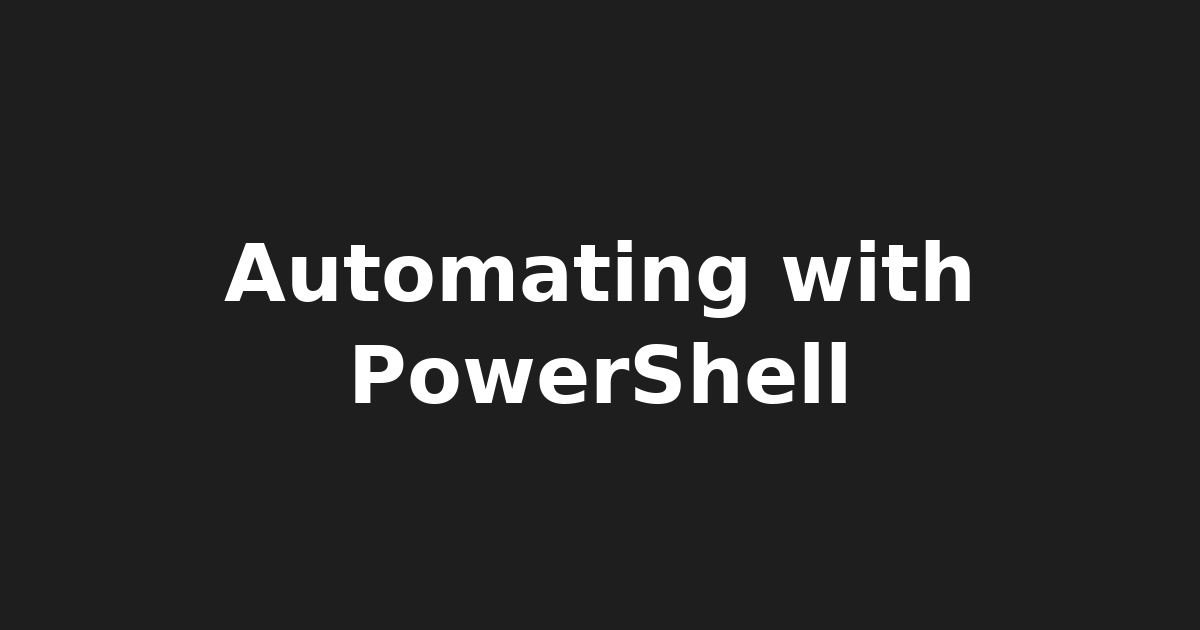PowerShell Core and GitHub Actions: Automation Made Easy

PowerShell Core and GitHub Actions: Automating Tasks and Workflows with PowerShell
In recent years, the PowerShell community has seen a significant surge in interest for PowerShell Core (also known as PSCore) and its integration with GitHub Actions. As a cross-platform version of PowerShell, it allows developers to write and run PowerShell code on Linux, macOS, and Windows platforms. In this article, we will explore how to use PowerShell Core as part of your CI/CD pipeline on GitHub and leverage GitHub Actions for automating tasks, testing, and deployments.
What is PowerShell Core?
PowerShell Core is a version of the PowerShell shell that can run on any platform, including Linux, macOS, and Windows. It's designed to be cross-platform, making it an attractive option for developers who need to automate tasks across multiple operating systems. With PowerShell Core, you can write PowerShell code that runs on any platform, without having to worry about compatibility issues.
What is GitHub Actions?
GitHub Actions is a CI/CD (Continuous Integration/Continuous Deployment) platform that automates software builds, tests, and deployments. It allows you to create automated workflows that run on your GitHub repository, so you can quickly test and deploy your code. With GitHub Actions, you can automate tasks such as building and publishing packages, testing and validating code, and deploying applications.
Integrating PowerShell Core with GitHub Actions
To integrate PowerShell Core with GitHub Actions, you need to create a workflow file that defines the automated tasks you want to run. The workflow file is written in YAML and uses various actions from the GitHub Actions ecosystem, including the powershell-core action.
Here's an example of a simple workflow file that uses PowerShell Core to build and publish a package:
name: Build and Publish
on:
push:
branches:
- main
jobs:
build-and-publish:
runs-on: ubuntu-latest
steps:
- name: Checkout code
uses: actions/checkout@v2
- name: Setup PowerShell Core
uses: powershell-core/setup-powershell-core@v1
- name: Build and publish package
run: |
# Write your build and publishing commands here
# For example:
# Publish-PSDSCResource -Path ./PSResources
This workflow file defines a job called build-and-publish that runs on an ubuntu-latest environment. The job has three steps: checking out the code, setting up PowerShell Core, and building and publishing the package.
Leveraging GitHub Actions for Automation
GitHub Actions provides a wide range of actions that can be used to automate tasks such as testing, validating, and deploying applications. With PowerShell Core, you can use these actions to create robust automation workflows that run on your GitHub repository.
Here are some examples of how you can leverage GitHub Actions for automation:
- Testing: Use the
powershell-coreaction to write and run tests in PowerShell. - Validation: Use the
powershell-coreaction to validate code and ensure it meets certain criteria. - Deployment: Use the
powershell-coreaction to deploy applications to production environments.
Integrating PowerShell Core with Other Tools
PowerShell Core can be integrated with other tools and services, such as Kubernetes and Docker, to create robust automation workflows. With PowerShell Core, you can use these tools to automate tasks such as:
- Kubernetes: Use the
powershell-coreaction to deploy applications to Kubernetes environments. - Docker: Use the
powershell-coreaction to build and publish Docker images.
Here's an example of a workflow file that uses PowerShell Core, Kubernetes, and Docker:
name: Build, Test, and Deploy
on:
push:
branches:
- main
jobs:
build-test-deploy:
runs-on: ubuntu-latest
steps:
- name: Checkout code
uses: actions/checkout@v2
- name: Setup PowerShell Core
uses: powershell-core/setup-powershell-core@v1
- name: Build and test Docker image
run: |
# Write your build and testing commands here
# For example:
# docker build -t my-app .
- name: Deploy to Kubernetes
uses: kubernetes-actions/deploy@v2
- name: Validate deployment
uses: kubernetes-actions/validate@v2
This workflow file defines a job called build-test-deploy that runs on an ubuntu-latest environment. The job has four steps: checking out the code, setting up PowerShell Core, building and testing the Docker image, and deploying to Kubernetes.
Conclusion
PowerShell Core and GitHub Actions are powerful tools for automating tasks and workflows in the PowerShell ecosystem. By integrating PowerShell Core with GitHub Actions, you can create robust automation workflows that run on your GitHub repository. With PowerShell Core, you can leverage GitHub Actions to automate tasks such as building and publishing packages, testing and validating code, and deploying applications.
Further Reading
- Microsoft's official documentation on PowerShell Core
- The PowerShell Community subreddit
- The GitHub Actions community forum
- Kubernetes Documentation: https://kubernetes.io/docs
- Docker Documentation: https://docs.docker.com
Note: This article is based on the latest information available as of 2025 and may change over time.
